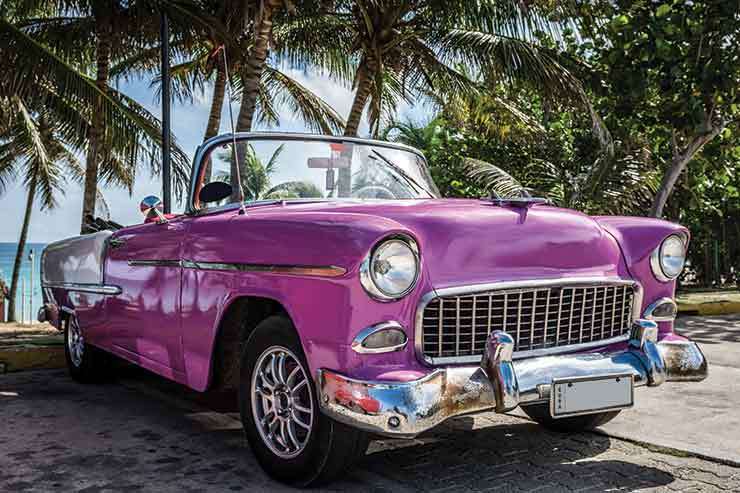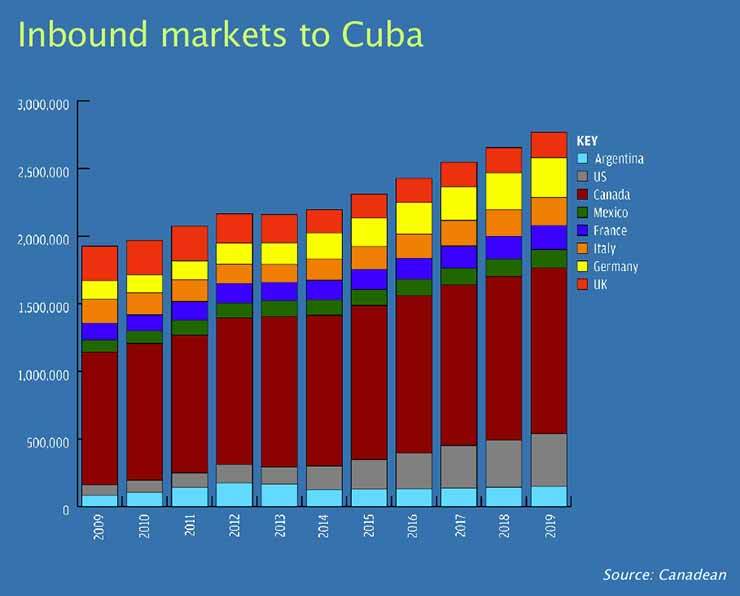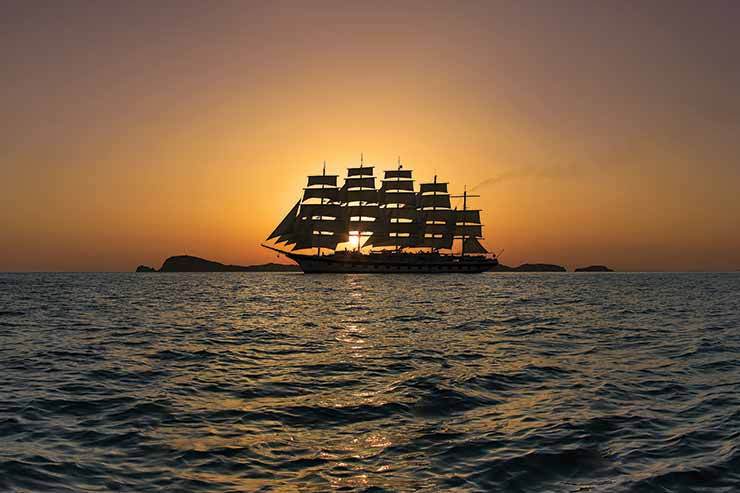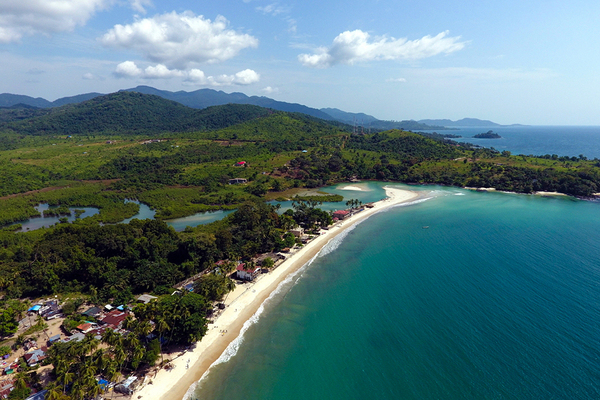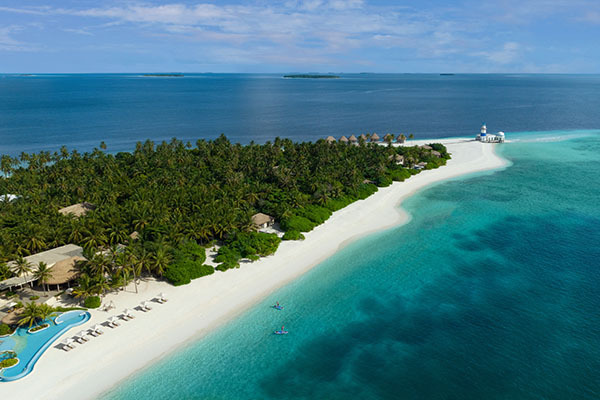Welcome back to Cuba
As age-old trade embargoes are lifted, tourism could thrive on an influx of curious Americans – but is the country prepared for its new visitors? Dave Richardson reports
If you look back one year to WTM 2014, nobody could have predicted the sudden warming of relations between the US and Cuba. President Obama announced last December that diplomatic relations would be resumed, and the embassy in Havana reopened in August after a gap of 54 years following the reopening of Cuba’s embassy in Washington.
But the US trade embargo of Cuba remains in place, and American tourists are still banned from visiting except in special circumstances such as educational visits, although business visitors now face fewer restrictions. Direct scheduled services between the two countries still don’t exist, with only very limited “closed” charter flights for approved visitors.
US visitors are not allowed to spend money in Cuba, and credit or debit cards linked to US banks are not accepted. But an increasing number of US visitors do come by travelling via Canada, or another country in the Caribbean or Latin America.
Restrictions are expected to ease in 2016 and pent-up demand will be enormous, but how quickly an aviation agreement can be signed and financial barriers torn down is open to question. And how well equipped Cuba might be for an influx of US tourists is another big question.
Cuba receives about three million visitors a year, the biggest market being Canada, while European markets are growing strongly with direct charter flights to mainly all-inclusive resorts along the north coast. Varadero is the largest, with others including Cayo Coco and Holguin, all three being served by Thomas Cook Airlines, which flew more than 60,000 people to Cuba last year. Tui-owned UK brand Thomson resumes flying to Cuba in 2016 after a gap of two years, with Boeing 787 Dreamliner flights to Varadero.
But with so many other beach resorts on its doorstep, the US market is likely to be more interested in touring Cuba and arriving in the capital, Havana, where nearly all scheduled flights operate. The airport needs major work to modernise and increase capacity as demand continues to increase.
Iberia reintroduced flights from Madrid to Cuba in June after pulling out two years ago, with five weekly flights on new Airbus A330s providing 12,000 extra seats a month from Europe. Established airlines include Air Canada, Aeromexico, Air Europa (also from Madrid), Air France, KLM, Virgin Atlantic and Aeroflot. National carrier Cubana serves Paris, Rome, Moscow, Toronto, Montreal and about a dozen destinations in Latin America, using mainly Russian-built aircraft such as the Ilyushin IL-96.
European management
Cuba’s hotel industry is well developed, and although all hotels are state-owned, many are now managed by European chains such as Sol Melia, which has nearly 30, and Iberostar. Good quality boutique accommodation is available in Havana and some colonial towns, and a limited number of private guest houses are now operating.
Cuba describes 60,000 of its hotel rooms as of four or five-star standard, with Varadero having one-third of them, Havana 22% and Santa Maria 19%.
But there is already a shortage of capacity in Havana, and tour operators warn of increasing prices and lower standards than in many competing destinations, which could lead to customer dissatisfaction. Internet access is often slow and unreliable, although mobile phone coverage is improving.
In a summary of the challenges facing Cuba, Euromonitor International research analyst Amanda Bourlier says: “Few major American players have announced any concrete plans for entering Cuba. Hotel construction involves high initial investment, subject to risk should the political climate cool.
“The biggest winner may turn out to be Airbnb, which has a chance to build long before major chains like Hilton, IHG and Marriot can put shovel to dirt on new developments. While Airbnb frequently markets the fact that its hosts provide a local take on a foreign place, that connection may resonate especially strongly with Americans curious about a Cuba that has been taboo to them for so long.
“Beyond beaches and convenience, Cuba’s unique history – not to mention the fact that many people in the US also hold Cuban citizenship or have family on the island – also presents a compelling draw for American tourists.”
On the radar as a growing cruise destinationWith US cruise lines banned from sailing to Cuba and other companies banned from sailing there from US ports, the cruise industry has hardly got started in Cuba. But the potential is enormous, as Cuba is the largest Caribbean country by far and combinations with many other countries are possible.
For the past two winter seasons, two cruise lines – Celestyal and Star Clippers (right) – have based a ship in Cuba, offering itineraries that also include Jamaica and the Cayman Islands. Celestyal is a Greek operator that has a new brand, Cuba Cruise, selling to the Canadian market, while European tour operators including Cosmos Tours, in the UK, also sell itineraries onboard the Louis Cristal.
Launched in January 2015, Cuba Cruise’s People-to-People programme is offered in partnership with US non-profit organisation the Fund for Reconciliation and Development, which authorises legal travel to Cuba for US citizens.
Highlights include Cuban-guided day trips to Santiago de Cuba, Trinidad and Cienfuegos, dance and Spanish language workshops, lectures by a University of Havana professor, and meetings with Cubans onboard and ashore.
There is a relative lack of major cruise infrastructure in Cuba at the moment, but in the meantime small-scale operations such as Star Clippers’ sailing ships can thrive.
Fay McCormack, Star Clippers’ UK general manager, says: “Cuba is a wonderful, welcoming and incredibly eclectic destination, but cruise lines and guests need to be aware that the economy and society are very different. Certainly, an influx of thousands of guests would overwhelm the tourism facilities at present, but if growth as a cruise destination is managed, Cuba could be a fabulous destination for many.
“Guests coming ashore should be aware they will find a less sophisticated way of life. Infrastructure is less efficient and internet and mobile phone connections erratic or non-existent. Cruise lines also need to be patient with the bureaucracy and some of the limitations of port facilities, but the country is keen to welcome inbound tourism to boost the economy.
“The key to Cuba’s growth for cruising is to be slow and structured, starting with smaller niche ships.” The relative lack of infrastructure has not deterred bigger cruise lines, however, and European operator MSC Cruises became the first mainstream operator to base a ship in Cuba this winter, with MSC Opera to homeport in Havana.
It will be the major American lines, though, that will begin to deliver huge numbers of cruise passengers to the destination as soon as they are able to secure access. The world’s largest cruise operator, Carnival Corp, will be offering limited cruises to Cuba from next May, thanks to its newly devised “social impact” brand, Fathom. Fathom cruises will see a P&O ship, Adonia, take predominantly American passengers to Cuba for the purposes of “humanitarian exchange”, thereby satisfying the travel restrictions. Carnival’s biggest US rivals Royal Caribbean International and Norwegian Cruise Line have also expressed interest in adding Cuba as a destination. |

